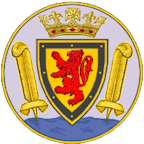History 1700 to 1800
Daniel Defoe describes the Saltash of 1724 as "a little, poor shattered town" which "seems to be the ruins of a larger place", saying that "we saw many houses, as it were, falling down, and I doubt not but the mice and rats have abandoned many more, as they say they will when they are likely to fall." However, he notes that "this town ..... has many privileges, sends members to Parliament, takes toll of all vessels that pass the river, and have the sole oyster-fishing in the whole river, which is considerable" and that "There is a good market here ..... it is also very much increased since the number of the inhabitants are increased at the new town ..... for those people choose rather to go to Saltash to market by water than to walk to Plymouth by land ..... because provisions are bought much cheaper at Saltash than at Plymouth."
Defoe thus correctly presents us with a town whose fabric was severely damaged by the Civil War, but whose inhabitants remained undaunted by their losses.
The Buller Almshouses were erected at Burraton Coombe in 1726, and the Corporation continued to play a major role in the fortunes of the town, establishing a borough poorhouse on land to the west of Fore Street (possibly on the site of an even earlier building).
Despite its decision not to accommodate the royal dockyards, Saltash still benefited from the evolution of the Royal Naval Dockyard at Devonport. In the 1750s Devonport passed over to Saltash an instruction to build two 16 gun sloops, each of 230 tons, for the Admiralty. HMS Alderney (commissioned in 1757) and HMS Tamar (commissioned in 1758) were duly built in the Saltash shipyards. Six years later, on the 3rd of June 1764, Tamar sailed from Plymouth on a voyage of discovery in company with HMS Dolphin, returning to England on the 9th of June 1766 after circumnavigating the globe.
It was during this century that Saltash began to develop beyond the confines of its original medieval plan. A number of large villas were built off Fore Street, including the magnificent Mansion House (which, sadly, is no longer in existance). In 1762, following an Act of Parliament, the Saltash Turnpike Trust was formed to improve the roads leading to and from the Borough of Saltash. Toll houses were erected, and a house for the turnpike keeper was added to the new development along Fore Street. Around 1771 a detached house was built on Longstone Road (now No 2 Callington Road), and a number of new town houses, several of which were on the slopes adjoining the busy waterside and market areas, went up.
In 1774, in a charter from George III, the Corporation finally won back the privileges of the Liberty of the Tamar and the ferry, previously granted by Queen Elizabeth. The Duchy tried to repeat its challenge of a hundred and sixty years earlier, but this time was unsuccessful.
The Corporation rebuilt the old market house in 1775. The new building had an enclosed upper floor, known as the Long Room, which was used as an assembly room. This was supported by an open colonnade of granite pillars, and the ground floor space was used as a pannier market and for the sale of corn. (The open area was later enclosed, but the pillars can still be seen supporting the upper structure of the building, which is now the Guildhall.)
About 1790 the Reverend Isaiah Birt set out to establish Baptist chapels in the Tamar valley. At Saltash he received a poor welcome (stones were thrown at him, and he was told to go back to where he came from), but he persisted, and in 1794 a Baptist Chapel was erected on land in what is now Culver Road.
A serious blow to the town's finances occurred in 1791, with the opening of the Torpoint ferry. This new ferry, having its Devon terminus closer to the centre of Plymouth, diverted a great deal of trade from Saltash. However, by the end of the century this "little, poor shattered town" had managed not only to rebuild but to expand, and also to consolidate its status as an important local market and centre for waterside industry.
page updated 2025-03-21
